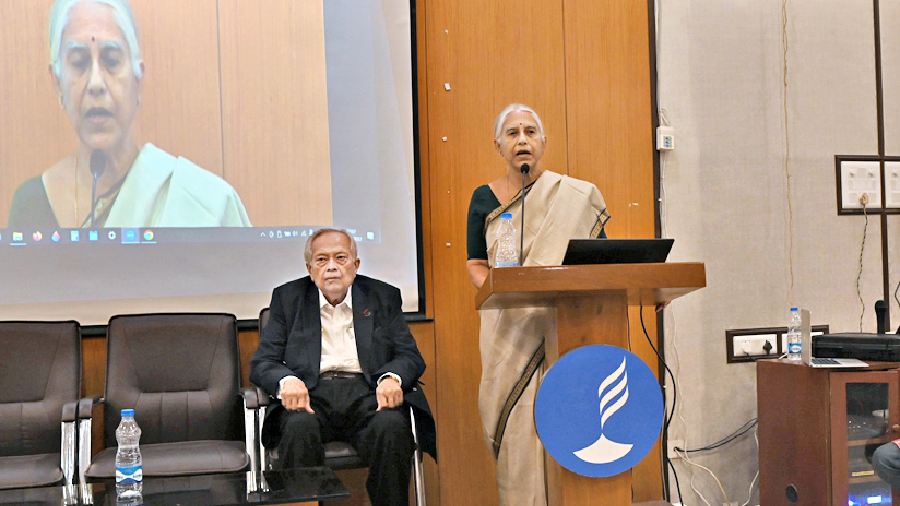- A draft proposal for Indian Statistical Institute by P.C. Mahalanobis in 1939
- A letter from the British government to the then principal of the college on carrying out “government surveillance of the chemistry department” following suspicion that lab chemicals could be used to make bombs for revolutionaries.
These are some of the treasures that are part of a Presidency College digital archive that was inaugurated on Monday.
Jadavpur University emeritus professor Supriya Chaudhuri, who is also an alumna of the erstwhile Presidency College, explained how important it was for a public institution to archive and tell stories from its past.
“Our universities have not been very good at preserving heritage or history. All these elements that go to make up the history of this institution are important to remember,” Chaudhuri said in her address.
“It is tragic, as I say that public universities in India are under such attack from all quarters (that) they don’t have time, funds, energy to put together their history and create their archives.”
She said public institutions should be “open”, “free to all”, and “hospitable” to anyone who wishes to read.
“Public institutions perhaps today are dying institutions. I hope the great public institutions like the Indian Institute of Science... like Presidency University, which have taken the initiative to archive their glorious past, put on record the kind of contributions they have made to the Indian intellectual life and particularly also simply to public education,” Chaudhuri said.
Upal Chakrabarti, a teacher in the sociology department, said the archive was built over the past few years, standing on the remarkable work of the late professor Swapan Chakravorty, who had initiated the process of identifying and digitising the materials during the bicentenary of the institution.
The digital archive at Presidency University has a massive collection of institutional correspondences, government proceedings, seminar society records, notices and circulars, account books, governing body minutes, photographs, college magazines, alumni publications, memoirs, student miscellanies and many more such documents, over a period of 200 years, pertaining to the everyday life of the institution.
“Perhaps no other public institution has contributed to public education on a scale Presidency College did. We have an obligation to archive that legacy. Presidency has its footprint all over the world in intellectual production. If someone is going to study modern Indian history, one has to visit the archive of Presidency College. We wanted to create this open access,” said Chakrabarti.

A draft proposal for Indian Statistical Institute by PC Mahalanobis in 1939
Many would not know that law was taught at Presidency College for 50 years before the introduction of a law course at Calcutta University.
“Engineering was taught at Presidency College. Commerce classes first started at Presidency College,” Chakrabarti, of the sociology department, said.
The Indian Statistical Institute grew out of a statistical laboratory that Mahalanobis had set up in the physics department of Presidency College.
Bikash Sinha, former director of the Saha Institute of Nuclear physics, was present at the inauguration of the digital archive at an auditorium on the second floor of Presidency, named after Mahalanobis.
“An archive of this stature should generate interest in the present generation about the glorious history of the college,” said Sinha.
